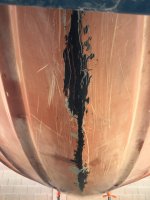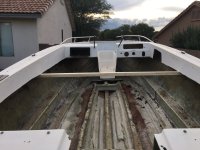Luposian
Petty Officer 2nd Class
- Joined
- Aug 15, 2015
- Messages
- 119
Ok. Seems you are going to rebuild it the way you intended, any advice from people who have rebuilt boats correctly, including me, don't mean much to you. So with that said, I will not give my opinion on what should or should not be done.
You assume incorrectly. But you are dealing with someone who doesn't just blindly trust people. If I think I have reason to believe an unconventional tactic could actually work (to a certain degree) and someone comes along and says, "But that will kill you!", I simply want to know WHY, in an irrefutable way. HOW is going about it the way I've mentioned, so horribly disasterous, I might as well drill a hole in the bottom of the hull and name my boat "Titanic"? :-D
It's not like the foam is soaked with gasoline and producing explosive fumes. It's not moldy. It's not producing noxious rotting fumes. It's not producing black mold spores. It's incapable of providing whatever buyancy it USED to provide. Direct contact with it WOULD spread (wick) moisture into new wood. And, likewise, with the remaining rotted plywood... if there were direct contact between it and new plywood, I can see some concern. It is still moist, so there is possibilty that it could wick moisture/rot into new plywood, to some degree. How far? Unknown. However, this is why I would try to isolate the new plywood from the rotted plywood and the moist foam.




































